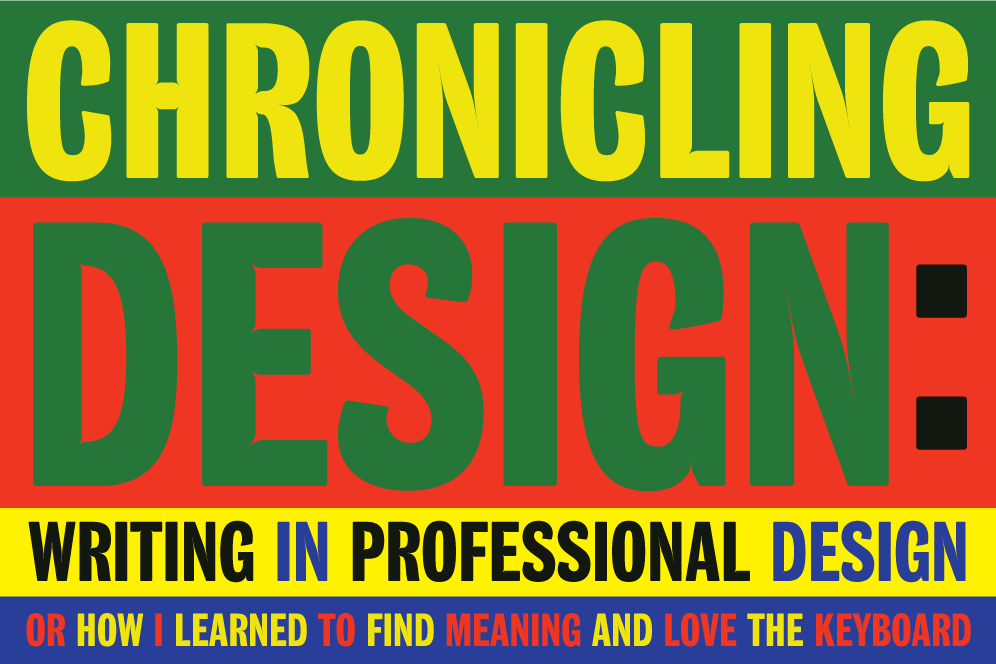by Michael Berrell, Beth Adams and Daniel Cardenas
The AIGA defines graphic design as the art and practice of planning and projecting ideas and experiences with visual and textual content, and this practice benefits greatly when the practitioner is also a fluent writer. Writing plays many roles in design, including being used as a tool to help create, inform, understand and to communicate. It helps us critique, develop ideas, work through problems and it can of course, eventually lead to making more money in a variety of ways.
For example, journaling as designing is an essential way to let the inside out. Through journals and personal reflection, the designer is able to make a stronger connection in an almost universal way. For instance, the inner voice that is carried along with all disciplines in the fine art world can be drowned out immensely with over explanation of what is seen. What makes a larger impact is to step away from the form and realize that the root of the story exists in a larger plane within the consciousness that has to be dug up and dusted off in order to get to the core.
Another example of how designers write to help with the creation of their work is through documentation of process. It can be in the form of interviews or photographs of subject matter whether it be people or objects. Continuously taking in the context of the project as closely as possible helps with the digestion of the final form. It helps build a trail to the end result and allows the viewer or critic to see the path taken.
Reflection is another method of writing that designers often undertake. This tool then becomes a mirror to help the designer understand their own work on a deeper level. The unexpected realization of ideas or concepts not seen at first glance may make themselves appear through this new understanding which can make the material that much richer.
Writing aids designers in helping others to understand their process. It also creates an entrance for the audience to understand design from the inside out. Designers need an outlet for their emotions and thoughts. They need a place to reflect and compare notes on their process, what inspires them and what bothers them. It matters because not all of design concepts are understood merely through visual dialogue. With some designers this process plays a key role in understanding the context of their design in the world or to themselves.
Some designers use writing as a tool to create content in their work. As the future of the design landscape evolves with technology, designers have moved into new territories, such as writing online. The speed is so close to instantaneous, that the time between having the thought and implementation to the audience is almost non-existent. Design writing matters because it creates community regardless of location. Through reading about design, one can virtually travel to other places or times, and study cultures and face issues that might not occur in their immediate landscape. The written word can also inform others about the inner turmoil or experience of working in design in an increasingly violent and chaotic world. The idea that writing is a necessary part of professional design may come as a shock to some, or seem counter intuitive, but when looked at in the larger picture of what designers are tasked to do begins to become much more obvious. The obvious answers to this are evident in the use of writing to teach design, document history and create proposals or self marketing information for clients. But once the academic hurdles are removed, graphic design is still more than just arranging pretty images on a page. The idea of visual layout, and the communication of ideas is further explored and enhanced by writing when it helps to create a voice for the designer, critique what has come before, and reframe the context of the message in a coherent way, that can be explored and explained further, with a new approach. So while many designers may go through their careers not knowing the full extent of clarity and contextual reassurance in their work, writing is essential, as it helps the audience achieve a deeper understanding.
(drop mic)jordan release date | Nike Shoes


